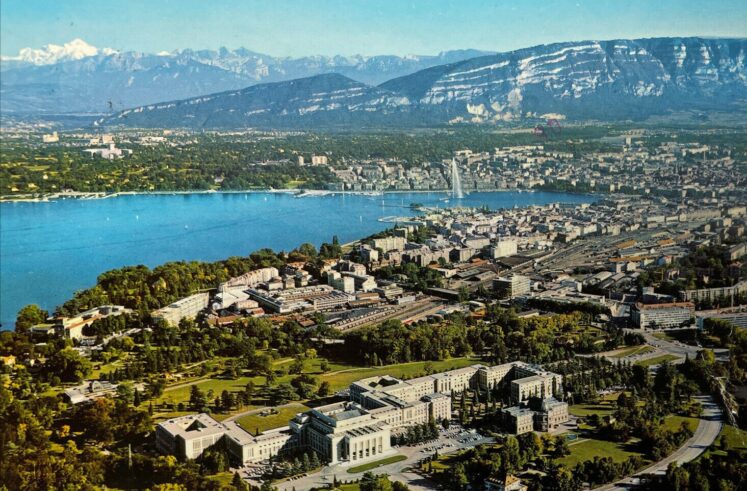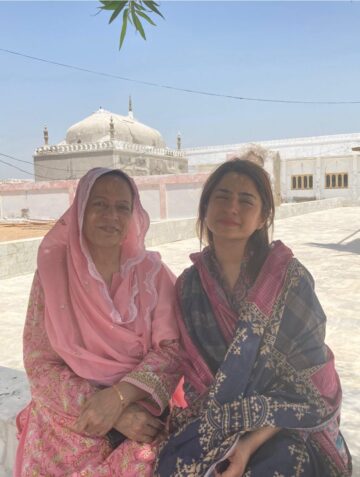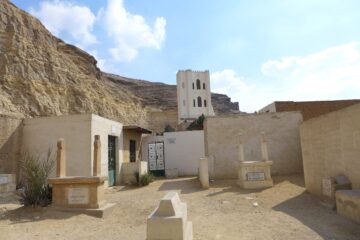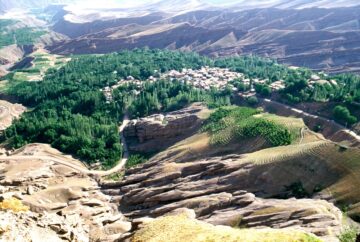The 48th Ismaili Imam, Sultan Muhammad Shah, Aga Khan III cut an active figure on the international diplomatic stage. Focussing especially on the welfare of Muslims in India, he was a prominent figure in the All-India Muslim Conference from 1928 – 1934, when he became a member of the Privy Council which advised the British sovereign. He also served as the delegate for British India at the Disarmament Conference and as chief Indian delegate to the League of Nations, founded in 1919 after World War I.
In 1937, the Imam was elected President of the League of Nations and presided over its 18th assembly. It was during his tenure as President that the inaugural assembly of the Palace (of the League) of Nations took place at its new home.
Overlooking Lake Geneva and with a clear view of the French Alps to the east, the Palace of Nations is located in Geneva, Switzerland. The building complex, home to the League of Nations and the headquarters of its proceedings, was designed and constructed in the ‘stripped classicism’ style and comprised a secretariat, library, assembly hall, and council chambers.
In his presidential speech in the General Assembly of the League of Nations inaugurating the new headquarters on 28 September 1937, Sultan Muhammad Shah noted:
When an institution such as ours erects such an edifice as its workshop, it gives testimony of its confidence and faith in its future. When an Assembly such as ours, after temporary residence in various places, enters into possession of a permanent home, it gives a sign of continuity in its aims. When your delegations, in the midst of a session of the Assembly, come to occupy the places reserved for them within these walls, each of them will have the feeling of finding its place and of being quite at home – I venture to say, for always – in this new Palace.
You have desired this Palace to remain open to everyone. Thus, in these noble halls, where others will succeed me as President, there will be perpetuated from year to year this will to continue, this feeling of friendship between all nations, of which the Palace itself is and will remain for ever the emblem.1
The Palace of Nations is currently used by the United Nations, the successor to the League of Nations.
Footnotes
- ‘The Palace of the League of Nations’. In Aga Khan III: Selected Speeches and Writings of Sir Sultan Muhammad Shah, ed. K. K. Aziz. Vol. II. (London: Kegan Paul International, 1997), p. 1153.
References
Farhad Daftary and Zulfikar Hirji. The Ismailis: An Illustrated History. London: Azimuth Editions in association with The Institute of Ismaili Studies, 2008, pp. 200-201.
K. K. Aziz (ed.) Aga Khan III: Selected Speeches and Writings of Sir Sultan Muhammad Shah, Volume II. London: Kegan Paul International, 1997, pp. 1153 – 1154, 1155 – 1158.
Source, CRediTs, and Acknowledgements
CHE0001S – Palace of Nations. Ismaili Heritage Database. Ismaili Heritage Project, The Institute of Ismaili Studies, 2023.
Aftab Jalia: Investigation, Writing – Original Draft, Visualisation, Data Curation; Fayaz S Alibhai: Conceptualisation, Methodology, Validation, Writing – Review & Editing, Visualisation, Supervision, Project Administration; Shiraz Allibhai: Conceptualisation; Nazir Mulji: Conceptualisation; Zayn Kassam: Conceptualisation; Abdul Javery: Software, Data Curation; Shoaib Momin: Software, Data Curation; Javed Merchant: Software, Data Curation; Nuresh Momin: Software, Data Curation.
About
The Ismaili Heritage Project is a tripartite collaboration between IIS (London), the Aga Khan Trust for Culture (Geneva), and the Department of Jamati Institutions (Lisbon). The project aims to document, protect, conserve, and celebrate the built and associated tangible heritage of the global Shia Ismaili Muslims.









